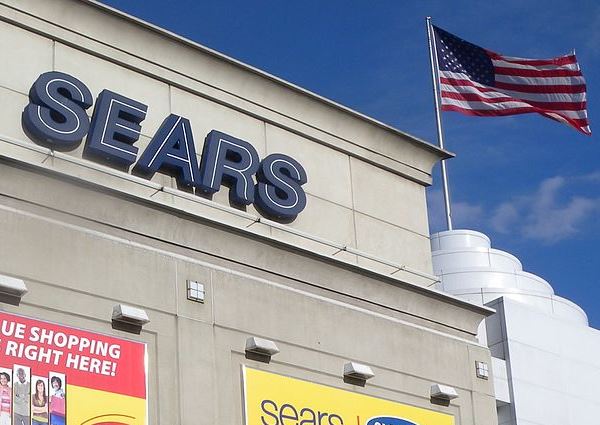
For the full year, the retailer’s EPS loss totaled $6.60 on revenues of $36.19 billion, compared with a year-ago EPS loss of $2.51 on revenues of $39.85 billion. The consensus estimates called for a loss of $7.91 per share on revenues of $36.28 billion.
On a GAAP basis the quarterly EPS loss totaled $3.37, compared with a loss of $4.61 in the same period a year ago.
U.S. same-store sales fell 6.4% in the fourth quarter, with sales falling 5.1% at Kmart stores and 7.8% at Sears stores. For the full year same-store sales fell 3.8%, with sales down 3.6% at Kmart and 4.1% at Sears stores.
Sears has started the process of spinning of its Lands’ End business, and there are some bright spots there. Net income grew both quarterly and for the full-year at Lands’ End, as did adjusted EBITDA. Sales, however, slipped from $1.586 billion in 2012 to $1.563 billion in 2013. Not a lot, only about 1.5%, but that still is not going to help any planned spin-off.
Sears did not provide guidance in its earnings press release, but the consensus estimate calls for a first-quarter EPS loss of $1.56 on sales of $8.07 billion. In the first quarter of last year the company posted an EPS loss of $1.54, so nothing much appears to have changed.
The company’s merchandise inventory as of February 1 totaled $7 billion, of which $6.4 billion was held in the United States. That is down $600 million globally and $355 million in the U.S. since the same time last year. The decrease was due to store closures and cuts in “a majority of categories” at both Sears and Kmart stores.
Long-term debt rose $900 million in the past year, to $2.9 billion due to the issuance of a new $1 billion term loan.
Is this better or worse than the report we got Wednesday from J.C. Penney Co. Inc. (NYSE: JCP)? J.C. Penney posted an adjusted EPS loss of $0.68 on revenues of $3.78 billion. Without providing any specific numbers, the company said it expected same-store sales to improve in the fourth quarter and to be better for the full year. Its stock was up nearly 6% in premarket trading Thursday morning.
Sears did not post as large a loss as expected and its revenues beat estimates by a little. Like J.C. Penney, the company had some happy talk about how well things are shaping up if not turning around.
And the stock price? Shares of Sears closed up 3.62% on Wednesday, at $40.40 in a 52-week range of $32.85 to $67.50. Shares were up nearly 6% in Thursday’s premarket trading to $42.75.
The consensus price target from Thomson Reuters is $20.00, from just one analyst. Will the last one out please turn out the lights?
Take Charge of Your Retirement In Just A Few Minutes (Sponsor)
Retirement planning doesn’t have to feel overwhelming. The key is finding expert guidance—and SmartAsset’s made it easier than ever for you to connect with a vetted financial advisor.
Here’s how it works:
- Answer a Few Simple Questions. Tell us a bit about your goals and preferences—it only takes a few minutes!
- Get Matched with Vetted Advisors Our smart tool matches you with up to three pre-screened, vetted advisors who serve your area and are held to a fiduciary standard to act in your best interests. Click here to begin
- Choose Your Fit Review their profiles, schedule an introductory call (or meet in person), and select the advisor who feel is right for you.
Why wait? Start building the retirement you’ve always dreamed of. Click here to get started today!
Thank you for reading! Have some feedback for us?
Contact the 24/7 Wall St. editorial team.



